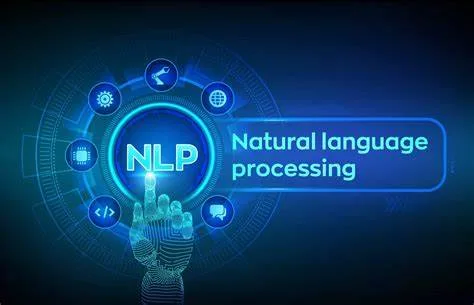Artificial Intelligence / AI / AI in Natural Language Processing / AI Natural Language Processing
Table of Contents
Introduction

Artificial Intelligence (AI) has become an all-encompassing force in numerous domains, revolutionizing various fields. Among its most profound applications is Natural Language Processing (NLP), which involves the development of AI models capable of understanding, interpreting, and generating human language. The advancements in NLP have led to cutting-edge technologies like virtual assistants, chatbots, and language translation tools, significantly transforming how we interact with technology and communicate with one another.
Understanding NLP

Natural Language Processing is a subfield of AI that focuses on the interaction between computers and human language. It encompasses a wide range of tasks, including:
- Text Analysis: The process of identifying entities, extracting information, and determining sentiment from written texts.
- Language Understanding: The ability to comprehend the meaning of sentences, paragraphs, and entire documents.
- Language Generation: The creation of human-like responses, summaries, and even creative writing.
- Language Translation: The translation of text or speech from one language to another while preserving meaning and context.
The Evolution of NLP

The history of NLP can be traced back to the 1950s when the famous Turing Test attempted to measure a machine’s ability to exhibit human-like intelligence. Early NLP systems relied on rule-based approaches, where human experts crafted complex grammatical rules to process language. However, these systems face limitations due to challenges in handling language ambiguity and variations.
The breakthrough in NLP came with the emergence of Machine Learning (ML) algorithms, particularly deep learning models. One significant development was the rise of Word Embeddings, which represented words as dense vectors in a continuous space, capturing semantic relationships between them. This laid the foundation for more advanced NLP techniques.
The Emergence of Virtual Assistants

The progress in NLP has resulted in the creation of virtual assistants like Siri, Google Assistant, and Alexa. These AI-powered companions can understand and respond to spoken commands, making daily tasks more manageable. Virtual assistants utilize NLP models to extract intent from user queries, process natural language, and provide relevant responses or actions.
With the increasing complexity of NLP models and the availability of vast amounts of training data, virtual assistants have evolved to handle more nuanced interactions. They can now engage in context-rich conversations, remember past interactions, and personalize responses based on user preferences.
Chatbots: Redefining Customer Service

Chatbots are another remarkable application of NLP, taking the form of interactive conversational agents. Businesses across various industries have integrated chatbots into their customer support processes to provide efficient and responsive services.
NLP-powered chatbots can analyze customer queries, understand intent, and deliver relevant information or assistance. Through continuous learning, they improve their responses over time, enhancing the overall user experience. Chatbots not only reduce the workload on human support agents but also offer round-the-clock availability, ensuring customers receive timely help whenever they need it.
Breaking Language Barriers with Translation

Language translation has been a long-standing challenge for humanity. However, AI-driven NLP models have made significant strides in breaking down language barriers. Advanced translation tools, such as Google Translate, Microsoft Translator, and Deeply, rely on NLP algorithms to deliver accurate and coherent translations between numerous languages.
NLP-based translation models leverage the power of deep learning, including transformer architectures like the famous “Attention is All You Need” (BERT) model. These models can analyze the context of words and phrases in different languages, enabling them to generate more precise translations that consider the subtleties and nuances of each language.
Ethical Considerations in NLP

Despite the numerous benefits of NLP advancements, they have also raised ethical concerns. Some of the key issues include:
- Bias in Language Models: NLP models are trained on vast amounts of data, and if the data contains biases, the models may inadvertently propagate those biases in their responses.
- Privacy Concerns: Language processing often involves handling sensitive user information, which raises questions about data privacy and security.
- Misinformation and Disinformation: NLP models can be used to generate fake news and misleading content, leading to challenges in combating misinformation.
Researchers and developers are actively working to address these concerns and ensure that NLP applications are developed responsibly and ethically.
The Future of NLP

As technology continues to advance, the future of NLP holds tremendous promise. NLP researchers and developers are continuously striving to enhance the capabilities of language models and address the challenges that come with them. Here are some exciting developments to look forward to:
- Multilingual NLP: As the world becomes more interconnected, the demand for multilingual NLP models is on the rise. Future advancements will focus on building models that can understand and generate multiple languages seamlessly, enabling efficient cross-cultural communication.
- Contextual Understanding: NLP models are already getting better at understanding context within conversations, but future improvements will lead to even more natural and human-like interactions. Virtual assistants and chatbots will be able to understand nuanced queries and provide contextually relevant responses.
- Emotional Recognition: Understanding human emotions is a vital aspect of effective communication. Future NLP models may incorporate emotion recognition techniques, allowing virtual assistants and chatbots to respond with empathy and understanding.
- Bias Mitigation: Efforts to mitigate bias in NLP models will continue to gain momentum. Researchers and developers are working on developing methods to identify and reduce biases in training data and model outputs, ensuring fair and inclusive language processing.
- Conversational AI in Healthcare and Education: NLP models have the potential to revolutionize healthcare and education. AI-powered virtual assistants could aid medical professionals in diagnosing illnesses and providing personalized treatment recommendations. In education, chatbots can assist students in learning new subjects and help educators create tailored lesson plans.
- Combating Misinformation: NLP can play a crucial role in combating misinformation by detecting and flagging misleading content. Advanced language models can help users discern the accuracy and reliability of the information they encounter online.
Challenges Ahead

While the future of NLP looks promising, it also comes with a set of challenges:
- Data Privacy: As NLP models become more sophisticated, there will be an increased need to handle user data with utmost care and ensure robust data privacy measures.
- Robustness and Security: Ensuring the robustness and security of NLP models is essential, as malicious actors may attempt to exploit vulnerabilities for nefarious purposes.
- Explanation ability: As NLP models become more complex, understanding how they arrive at their decisions becomes more difficult. Achieving explainable AI in NLP will be crucial to building trust in these systems.
- Domain-Specific Understanding: NLP models might struggle to understand domain-specific jargon and context. Developing specialized models for specific industries and domains will be necessary to improve accuracy and relevance.
AI in Natural Language Processing key facts
- AI-driven NLP enables virtual assistants to comprehend and respond to human language queries accurately.
- Language translation has been revolutionized by AI models, enhancing global communication.
- Chatbots powered by AI-NLP seamlessly interact with users, providing personalized experiences.
- Sentiment analysis of AI-NLP aids in understanding emotions expressed in texts and social media.
- Natural Language Processing advancements enable automated text summarization for efficient information extraction.
- AI models have achieved impressive results in generating coherent and contextually relevant human-like language.
- Speech recognition powered by NLP enables voice-controlled devices and hands-free interaction.
- AI-NLP assists in language understanding, contributing to the improvement of search engines and recommendation systems.
- Contextual understanding of NLP leads to more human-like conversations with virtual assistants.
- AI in NLP continues to evolve, promising exciting applications in healthcare, education, and customer service.
Conclusion
The development of AI in Natural Language Processing has unleashed a new era of human-computer interaction. Virtual assistants, chatbots, and language translation tools have become indispensable parts of our daily lives, making communication and information access more seamless than ever before.
As we move forward, it is vital to embrace NLP advancements responsibly, addressing ethical concerns and ensuring that these technologies are used for the betterment of society. Continued research and development in NLP will undoubtedly bring forth even more groundbreaking applications, enhancing our understanding of language and transforming the way we interact with machines and each other. With proper guidance and vigilance, the future of NLP holds great promise, revolutionizing the way we communicate and shaping a more connected and inclusive world.
Read More: Artificial Intelligence / AI / AI in Natural Language Processing / AI Natural Language Processing



































Good day! I could have sworn I’ve been to this site before but after browsing through
some of the articles I realized it’s new to me.
Nonetheless, I’m certainly pleased I found it and I’ll be bookmarking
it and checking back regularly!